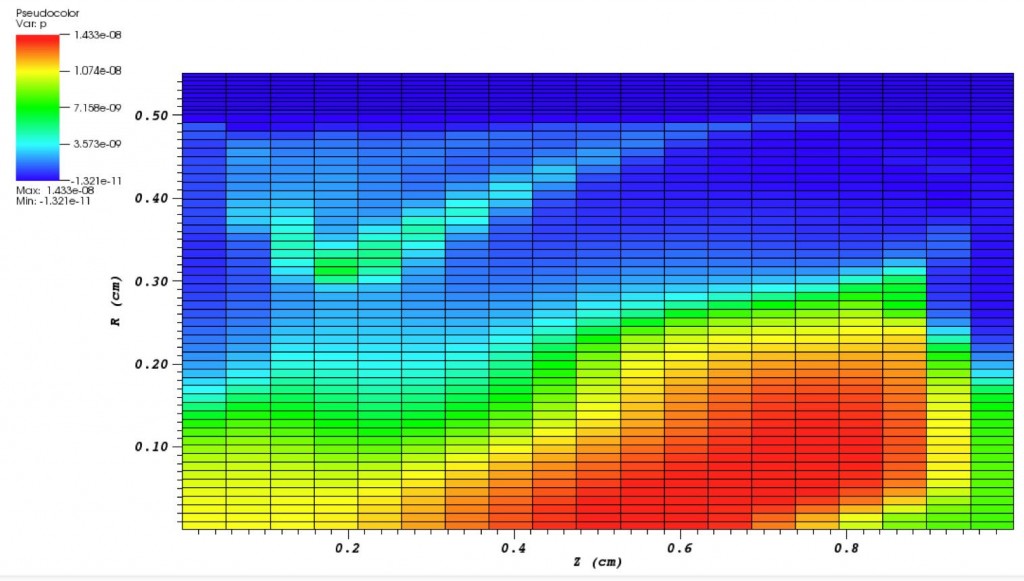Derrek Drachenberg (15-FS-007)
Abstract
Next-generation x-ray free-electron light sources require seeding with high-energy kiloelectronvolt photons to increase efficiency and coherence. Several proposed seeding schemes exist, including high harmonic generation via high-intensity laser–plasma interactions. High harmonic generation can be accomplished by the interaction of ultrashort laser pulses with pressurized noble gases. At sufficient intensity, the interaction between laser and gas atoms causes tunnel ionization of an outer-shell electron. The ionized electron is accelerated by the laser electric field outside of the ion, ultimately recombining and emitting a high harmonic photon. While seeding of x-ray free-electron light sources by high harmonic generation has been demonstrated and is a contender in the planned Linac Coherent Light Source upgrade at the SLAC National Accelerator Laboratory at Stanford, significant developments in both the drive laser and the high harmonic-generation process are required. In this study, we are exploring the feasibility of an improved model of the high harmonic-generation process and created a set of physics requirements and a design for a high-repetition-rate, 1-keV coherent x-ray source. The x-ray free-electron light sources such as the Linac Coherent Light Source upgrade are seeded by spontaneous emission, but would benefit from direct seeding. A new model will inform the design of a coherent x-ray source with significantly improved efficiency, and therefore lower the required pump laser power to generate desired x-ray photons. Our improved model will apply the existing LLNL nonequilibrium atomic physics code CRETIN to high harmonic generation in a pressurized noble gas.
The goal of this study is to determine the feasibility of modifying existing atomic models by including high harmonic-generation theory that describes the multiple-photon and tunnel ionization processes and generation of high harmonics. Modifications include the addition of atomic rates to established atomic codes to enable high harmonic-generation modeling. With an improved model of the process, we expect to create the capability to exploit new insights into x-ray and pump phase matching, which will enable increased efficiency, potentially making high harmonic-generation seeding of x-ray free-electron light sources practical. In parallel, we are identifying a set of physics requirements and proof-of-principal experiments to show feasibility of high harmonic-generation seeding of advanced light sources such as the upgrade to the Linac Coherent Light Source. In addition to DOE applications, the laser sources required to generate high-repetition-rate 2.5- and 4-µm sources would have applications in the medical field and for remote target laser sensing and other applications in the defense community.
Mission Relevance
This feasibility study will extend the Laboratory's core competency in lasers and optical science and technology by providing enabling technology for a future laser source of high-brightness, high-flux x-rays for new physics experiments. It also offers the potential for new collaborations with the SLAC National Accelerator Laboratory and Lawrence Berkeley National Laboratory in lasers for accelerator systems.
FY15 Accomplishments and Results
The initial stages of this project focused on the feasibility of model development for the early-time plasma state in a typical high harmonic-generation gas target. We modified the existing code CRETIN to include a description of multiple-photon and tunnel ionization, allowing time-dependent simulations of the initial stages of laser pulse propagation. A large body of theoretical work exists, and so these modifications were relatively easy. Therefore, in FY15 we (1) completed modification of the CRETIN code, (2) developed the post-processing tools necessary to describe the generation of the high harmonic-generation pulse and phase matching in the plasma target, and (3) performed limited time-dependent simulations on existing, published high harmonic-generation data as verification of the work.






